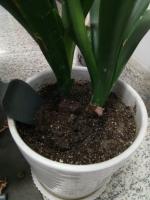Which Part of the Plant Carries Water to the Leaves?
Plants rely on water and nutrients to thrive, just like animals do. While animals have circulatory systems to transport blood and nutrients throughout their bodies, plants have a specialized system called the vascular system. The vascular system is responsible for carrying water and nutrients throughout the plant, including to its leaves.
Xylem: The Water Transporting Tissue
The xylem is a specialized tissue in plants that is responsible for transporting water from the roots to the leaves. The xylem is made up of a complex network of tubes and cells that work together to move water against gravity. Xylem cells have thick, lignified cell walls that provide strength and support, making them able to withstand the pressure of moving water.
One of the most important things to note about the xylem is that it moves water only in a one-way direction: from the roots up to the leaves. This unidirectional flow is made possible by the cohesion-tension theory, which says that water molecules are held together by hydrogen bonds and create a continuous column of water that can be pulled up the xylem through a process called transpiration.
Phloem: The Nutrient Transporting Tissue
Unlike the xylem, the phloem is responsible for transporting nutrients, not water. The phloem is made up of two types of cells: sieve tubes and companion cells. The sieve tubes are long, thin tubes with perforated end walls that allow nutrients to flow from cell to cell. The companion cells are important for loading and unloading nutrients into the sieve tubes.
The most important nutrient transported by the phloem is sucrose, which is produced during photosynthesis in the leaves. Sucrose is transported to where it is needed throughout the plant, including to the roots and other growing tissues.
The Importance of Water Transport in Plants
Water transport in plants is essential for their survival. Without water, plants are unable to carry out important processes like photosynthesis or maintain their rigidity. Proper water transport also helps plants to avoid wilting, which can occur when there is not enough water in the plant to maintain turgor pressure.
Water is also important for maintaining temperature regulation in plants. Plants that are unable to transport water efficiently may overheat, leading to heat stress and other issues.
Conclusion
In conclusion, the xylem is the specialized tissue responsible for transporting water up from the roots to the leaves in a one-way direction, while the phloem is responsible for transporting nutrients, including sucrose, throughout the plant. Both of these tissues are essential for the survival of the plant, as water and nutrients are required for important processes like photosynthesis and maintaining structure and temperature regulation.

 how many times do yo...
how many times do yo... how many planted tre...
how many planted tre... how many pine trees ...
how many pine trees ... how many pecan trees...
how many pecan trees... how many plants comp...
how many plants comp... how many plants can ...
how many plants can ... how many plants and ...
how many plants and ... how many pepper plan...
how many pepper plan...
































